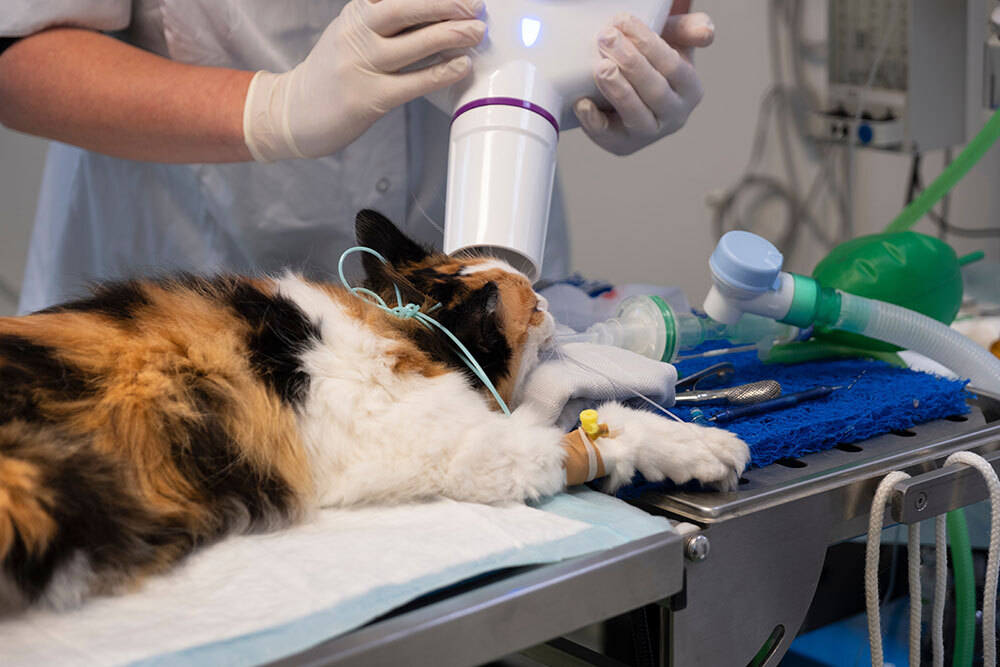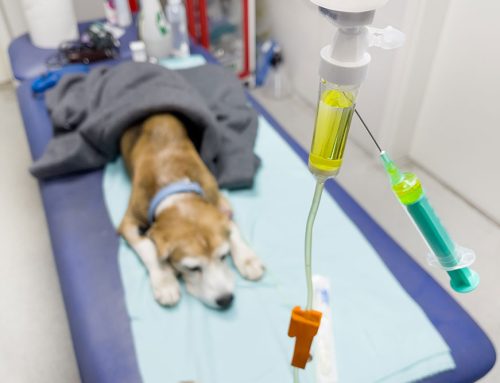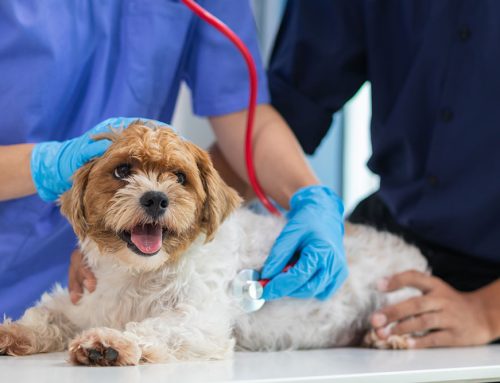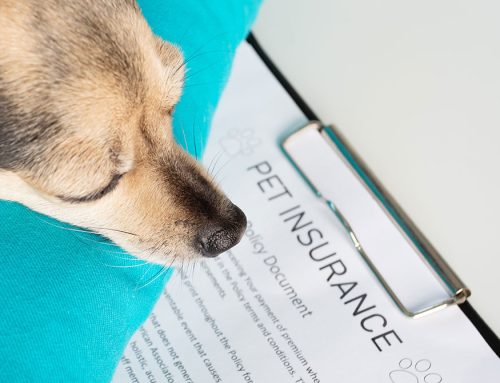When it comes to our pets, we tend to notice limping, itchy skin, or a lack of appetite right away—but dental disease often flies under the radar. Many pets suffer silently with oral pain or infection for months (or even years) before it’s recognized. Dental health isn’t just about fresh breath or pearly whites—it’s an essential part of your pet’s overall health, comfort, and longevity.
At Liberty Veterinary Hospital, we believe that understanding the signs of dental disease—and knowing when surgical treatment is needed—can make all the difference in your pet’s quality of life. In this guide, we’ll walk through common conditions that may require dental surgery, the importance of diagnostics like X-rays and CT scans, what to expect after a procedure, and how to prevent problems before they start.
Schedule an Appointment at Liberty Veterinary Hospital
When Does Your Pet Need Dental Surgery?
Not every dental problem can be solved with a routine cleaning. In some cases, advanced procedures like extractions or oral surgery are necessary to resolve infection, relieve pain, and prevent further complications.
Severe Periodontal Disease
Periodontal disease—one of the most common health issues in pets—occurs when bacteria build up along the gumline and below the surface. Left untreated, it damages the ligaments, bone, and soft tissue that support your pet’s teeth.
Warning Signs:
- Bad breath that doesn’t improve
- Red, swollen, or bleeding gums
- Loose or missing teeth
- Reluctance to eat, chew toys, or play
Advanced cases may require extractions to remove infected or unstable teeth and stop the spread of bacteria.
Why Dental Care Matters – AAHA
Fractured or Broken Teeth
Pets can break a tooth chewing on hard toys, bones, rocks, or even from trauma like a fall or rough play. Exposed pulp is not only extremely painful but can also lead to abscesses or jawbone infection.
Treatment options include:
- Root canal therapy for salvageable teeth
- Tooth extraction if the damage is severe or infection is advanced
Diagnosis and Treatment of Fractured Teeth – Today’s Veterinary Practice
The Dangers of Popular Dog Chews – Preventive Vet
Retained Baby Teeth (Deciduous Teeth)
Puppies and kittens are born with baby teeth that should fall out naturally—but sometimes, they don’t. Retained deciduous teeth can crowd adult teeth, cause misalignment, or trap food and bacteria.
This is most common in toy and small breeds, and surgery is often needed to remove the baby tooth and prevent long-term dental issues.
Deciduous Tooth Removal in Dogs – Today’s Veterinary Practice
Malocclusions and Misaligned Teeth
Misalignment of teeth or the jaw (malocclusion) can lead to painful rubbing, ulcers, and difficulty eating. Some cases may be managed with tooth extractions, while others require more advanced orthodontic care.
Types of malocclusions include:
- Overbite (Class 2)
- Underbite (Class 3)
- Crossbite or rotated teeth (common in small breeds)
Malposition & Malocclusion in Pets – dvm360
How Diagnostics Improve Dental Outcomes
Why X-Rays and CT Scans Matter
Much of your pet’s dental disease happens below the gumline—where you can’t see it. This is why dental imaging is crucial before any dental procedure.
Benefits of imaging include:
- Identifying root infections or fractures
- Confirming jawbone integrity before extractions
- Detecting tumors, abscesses, or cysts
- Planning complex surgical procedures
Why Pets Need Dental X-Rays – Preventive Vet
Why Does My Dog Need a CT Scan? – VetHelpDirect
Managing Pain and Recovery After Dental Surgery
Pain Control Is a Top Priority
Pets bounce back quickly when they’re kept comfortable. We use a multi-modal pain management approach to ease your pet’s recovery and minimize stress.
Common pain relief options:
- NSAIDs (for inflammation and mild to moderate pain)
- Opioids (for more severe cases)
- Local nerve blocks (during surgery for immediate relief)
Veterinary Pain Management – Merck Vet Manual
What to Expect at Home
After surgery, most pets recover quickly with the right support. Here’s what you’ll typically need to do:
- Feed soft food for 7–10 days
- Avoid tug toys, hard treats, or chews
- Watch for swelling, bleeding, or refusal to eat
- Give all prescribed medications as directed
- Follow up for rechecks if recommended
Post-Procedure Pain Control – Today’s Veterinary Nurse
Preventing Dental Disease Before It Starts
Good oral hygiene at home can dramatically reduce your pet’s risk of needing dental surgery. Just like us, pets benefit from consistent, preventive care.
Daily & routine preventive care:
- Brush daily with pet-safe toothpaste
- Schedule dental cleanings every 6–12 months (or more often for at-risk pets)
- Use vet-recommended dental chews and water additives
- Avoid hard items that can break teeth (antlers, ice, hooves, etc.)
Veterinary Oral Health Council – VOHC
Dental surgery isn’t just about fixing bad breath or removing a broken tooth—it’s about relieving pain, restoring function, and protecting your pet’s long-term health. With early detection, advanced diagnostics, and a commitment to preventive care, many dental problems can be managed before they ever require surgery.
If you’re concerned about your pet’s mouth—or if it’s just been a while since their last dental check-up—we’re here to help.
Schedule an Appointment at Liberty Veterinary Hospital
Let’s work together to keep your pet’s smile healthy for life.









Leave A Comment